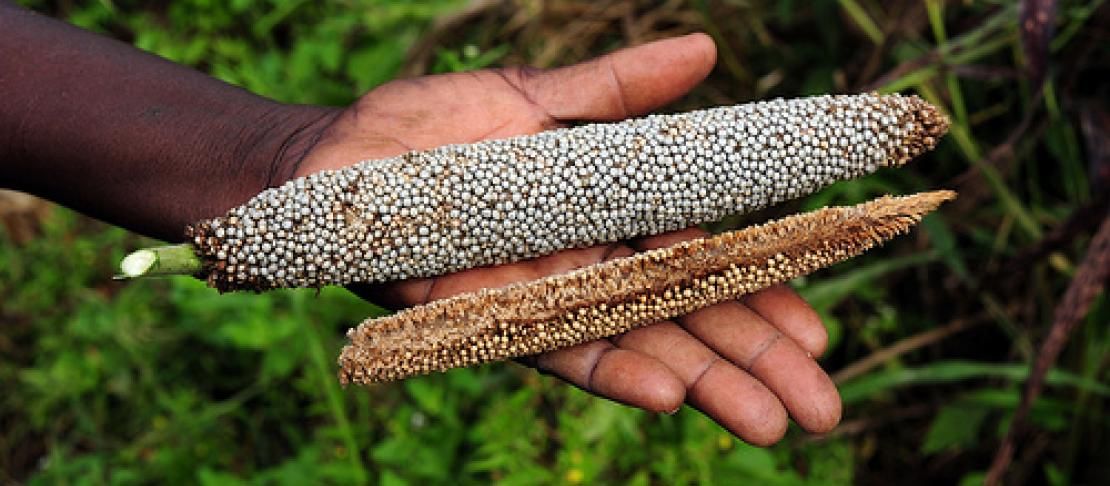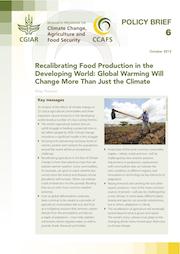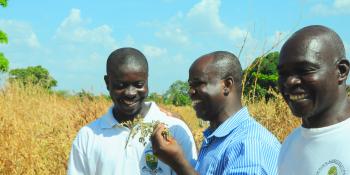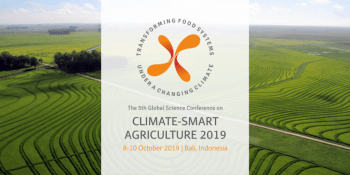Recalibrating food production in a changing climate - what do we know and what can be done?

 The headlines this week scream about the monster storm that struck the east coast of the United States this week. Dozens of people perished, more than 7 million people lost power, more than 16,000 airplane flights have been cancelled, the subway systems in New York and Washington DC were flooded, and the New York Stock Exchange shut down for the first time since 1888.
The headlines this week scream about the monster storm that struck the east coast of the United States this week. Dozens of people perished, more than 7 million people lost power, more than 16,000 airplane flights have been cancelled, the subway systems in New York and Washington DC were flooded, and the New York Stock Exchange shut down for the first time since 1888.
But hundreds of miles inland, the Midwest farms of the U.S. are still starved for water after a horrid summer and fall of drought, and the question of how agriculture needs to change with the climate has finally been accepted by many whose livelihoods are tied to their crops. And thousands of miles away, farmers in developing countries are facing similar, and graver challenges, as climate change threatens staple tropical crops and the ecosystems that sustain them. In regions which are prone to food insecurity, such as sub-Saharan Africa, this could spell disaster.
A new policy brief by the CGIAR Research Program on Climate Change, Agriculture and Food Security (CCAFS) outlines the challenges required in feeding the estimated 9-10 billion people who will live in this world by 2050. In the brief, the need for a complete recalibration of what we grow around the world is detailed, as climate change will bring challenges in weather, water use, and even increased crop pests and diseases.
The brief was based on an extensive report requested by the United Nations committee on world food security. This initial report considered the fate of 22 major food staples along with three critical natural resources. The authors of the brief, in looking at all of these crops from a more holistic vantage point, perceived major challenges not just in providing everyone with enough calories, but in providing protein and micronutrients as well. And the brief highlighted the needs of smallholder farmers who lack the resources to address these challenges.
“The problems that climate change produces in the fields will be tackled in industrialized countries. It is the smallholder farmers in Africa and South Asia and the urban poor who spend too much of their wages on food; these are the people who will have less to eat in the near future unless we adapt at a much faster pace,” said Robert Zougmoré, CCAFS’ regional program leader for West Africa.
Hardier varieties of maize, rice and wheat—the three main food staples around the world—must be developed quickly and propagated even faster to avoid declines in yield. The common sources of protein—livestock, fish, and even soybeans—all face difficulties in adapting to the new normal.
While the challenges are numerous, it may be possible to plug in new crops as key staples. Cassava, for example, can become a prime source of calories in many places because it fares better than most under heat duress. Cowpeas can also withstand harsher summers and can thus provide more protein in places where the environs have become too hot to raise livestock.
Bruce Campbell, CCAFS program director, has been a major promoter of both the need to adapt as well as its possibilities. “Two decades ago there was almost no rice consumption in certain areas of Africa, now there is,” he told the BBC in an interview from the Global Conference on Agricultural Research and Development in Punta del Este, Uruguay. “People have changed because of the pricing, it's easier to get, it's easier to cook. I think those sort of shifts do occur and I think they will in future.”
How to adapt?
While the news seems grim, adaptation is possible. Recent CCAFS research in Africa found that bit by bit, farmers were already adapting to climate change through a range of practices. The infographic below shows which practices have been highly adopted, and which ones remain underutilized.
The right crop for the right place
Research is also underway on adapting key crops to a changing climate, whether through breeding or by completely switching which crops are grown in different areas.
Scientists at the International Center for Tropical Agriculture (CIAT – which is the lead center of the CCAFS program) have been investigating options for a number of crops. Click the links below for the stories:
- Probing the Potato
- The Cavendish Banana and its Plantain Cousins
- Beans, the “Poor Man’s Protein”
- Cassava, the “Rambo Root”
Read more
Thornton P. 2012. Recalibrating Food Production in the Developing World: Global Warming Will Change More Than Just the Climate. CCAFS Policy Brief no. 6. CGIAR Research Program on Climate Change, Agriculture and Food Security (CCAFS).
- Thornton P and Cramer L, eds. 2012. Impacts of climate change on the agricultural and aquatic systems and natural resources within the CGIAR's mandate. CCAFS Working Paper 23. Copenhagen, Denmark: CCAFS.
This story was written Dan Klotz from Burness Communications, and Vanessa Meadu from the CCAFS Communications team. For more updates follow us on twitter @cgiarclimate and on Facebook.



